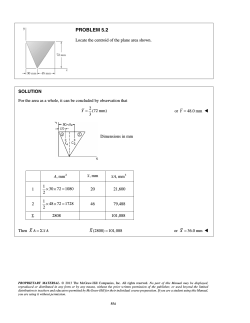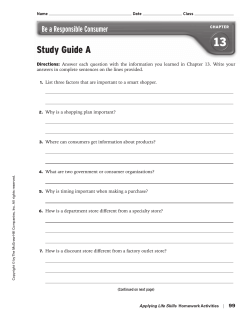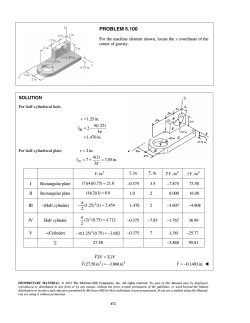
infectious disease
Copyright © The McGraw-Hill Companies, Inc. Permission required for reproduction or display. Chapter 36 The Epidemiology of Infectious Disease 1 Copyright © The McGraw-Hill Companies, Inc. Permission required for reproduction or display. May 7, 2015 微免科 陳怡原 mchen@mail.cgu.edu.tw Ext. 3352 2 Copyright © The McGraw-Hill Companies. Permission required for reproduction or display. Today’s lecture will discuss: 1. What is epidemiology? 2. How to identify the etiologic agent of various infectious diseases and how to control and prevent epidemics 3. The epidemiology of nosocomial infections and emerging and reemerging infectious diseases. 4. The role of the public health system 3 Copyright © The McGraw-Hill Companies. Permission required for reproduction or display. Epidemiology • science that evaluates occurrence, determinants, distribution, and control of health and disease in a defined human population • epidemiologist – one who practices epidemiology • John Snow was the first epidemiologist – studied cholera in London 4 Copyright © The McGraw-Hill Companies. Permission required for reproduction or display. Centers for Disease Control and Prevention (CDC) • functions as national focus for – developing and applying disease prevention and control – environmental health – health promotion and health education activities designed to improve the health of the people • world wide counterpart is the World Health Organization (WHO) located in Geneva, Switzerland 5 Copyright © The McGraw-Hill Companies. Permission required for reproduction or display. Figure 36.1 6 Copyright © The McGraw-Hill Companies. Permission required for reproduction or display. Epidemiology… • determine: – – – – causative agent source and/or reservoir of disease agent mechanism of transmission host and environmental factors that facilitate development of disease within a defined population – best control measures 7 Copyright © The McGraw-Hill Companies. Permission required for reproduction or display. Epidemiology Terminology • sporadic disease – occurs occasionally and at irregular intervals • endemic disease – maintains a relatively steady low-level frequency at a moderately regular interval • hyperendemic diseases – gradually increase in occurrence frequency above endemic level but not to epidemic level 8 Copyright © The McGraw-Hill Companies. Permission required for reproduction or display. More terms… • outbreak – sudden, unexpected occurrence of disease – usually focal or in a limited segment of population • epidemic – sudden increase in frequency above expected number – index case – first case in an epidemic • pandemic – increase in disease occurrence within large population over wide region (usually worldwide) 9 Copyright © The McGraw-Hill Companies. Permission required for reproduction or display. Figure 36.2 10 Copyright © The McGraw-Hill Companies. Permission required for reproduction or display. Remote Sensing and Geographic Information Systems: Charting Infectious Diseases • can be used to study distribution, dynamics, and environmental correlates of microbial diseases 11 Copyright © The McGraw-Hill Companies. Permission required for reproduction or display. More on Charting Infectious Diseases… • remote sensing (RS) – gathering of digital images of Earth’s surface from satellites and transforming data into maps • Geographic information system (GIS) – data management system that organizes and displays digital map data from RS 12 Copyright © The McGraw-Hill Companies. Permission required for reproduction or display. Measuring Frequency: The Epidemiologist’s Tools • to determine if an outbreak, epidemic or pandemic is occurring, epidemiologists measure disease frequency at single time points and over time • statistics – mathematics dealing with collection, organization, and interpretation of numerical data • three important statistical measures of disease frequency – morbidity rate – prevalence rate – mortality rate 13 Copyright © The McGraw-Hill Companies. Permission required for reproduction or display. Morbidity rate • an incidence rate • number of new cases in a specific time period per unit of population # new cases during a specific time # individuals in population 14 Copyright © The McGraw-Hill Companies. Permission required for reproduction or display. Prevalence rate • total number of individuals infected at any one time • depends both on incidence rate and duration of illness 15 Copyright © The McGraw-Hill Companies. Permission required for reproduction or display. Mortality rate • number of deaths from a disease per number of cases of the disease # deaths due to given disease size of total population with disease 16 Copyright © The McGraw-Hill Companies. Permission required for reproduction or display. Patterns of Infectious Disease in a Population • infectious disease – disease resulting from an infection by microbial agents such as viruses, bacteria, fungi, protozoa, and helminths • communicable disease – can be transmitted from one host to another • two types of epidemics – common source epidemic • results from single common contaminated source such as food – propagated epidemic • results from the introduction of a single infected individual into a susceptible population which is propagated to others 17 Copyright © The McGraw-Hill Companies. Permission required for reproduction or display. Course of infectious disease • incubation period – period after pathogen entry but before signs and symptoms appear • prodromal stage – onset of signs and symptoms – not clear enough for diagnosis • period of illness – disease is most severe and has characteristic signs and symptoms • convalescence – signs and symptoms begin to disappear 18 Copyright © The McGraw-Hill Companies. Permission required for reproduction or display. Recognition of an Infectious Disease in a Population • involves use of surveillance methods • cases of a disease recognized by its characteristic disease syndrome – set of signs and symptoms characteristic of a disease – signs • objective changes in body that can be directly observed – symptoms • subjective changes experienced by patient 19 Copyright © The McGraw-Hill Companies. Permission required for reproduction or display. Figure 36.3 20 Copyright © The McGraw-Hill Companies. Permission required for reproduction or display. Figure 36.5 21 Copyright © The McGraw-Hill Companies. Permission required for reproduction or display. Herd immunity • resistance of a population to infection and to spread of an infectious organism because of the immunity of a large percentage of the population • level can be altered by introduction of new susceptible individuals into population • level can be altered by changes in pathogen – antigenic shift – major change in antigenic character of pathogen – antigenic drift – smaller antigenic changes 22 Copyright © The McGraw-Hill Companies. Permission required for reproduction or display. Figure 36.6 23 Copyright © The McGraw-Hill Companies. Permission required for reproduction or display. What Pathogen Caused the Disease? • Koch’s postulate (or modifications of them) are used if possible • clinical microbiology lab – plays important role in isolation and identification of pathogen • communicable disease – can be transmitted from one host to another 24 Copyright © The McGraw-Hill Companies. Permission required for reproduction or display. What was the Source and/or Reservoir of the Pathogen? • source – location from which pathogen is transmitted to host • period of infectivity – time during which source is infectious or is disseminating the organism • reservoir – site or natural environmental location in which pathogen is normally found – sometimes functions as source of pathogen 25 Copyright © The McGraw-Hill Companies. Permission required for reproduction or display. Human sources/reservoirs • carrier – infected hosts who are potential sources of infection for others – types of carriers • active carrier has overt clinical case of disease • convalescent carrier has recovered but continues to harbor large numbers of pathogen • healthy carrier harbors the pathogen but is not ill • incubatory carrier is incubating the pathogen in large numbers but is not yet ill 26 Copyright © The McGraw-Hill Companies. Permission required for reproduction or display. More Types of carriers… • casual, acute, or transient carriers – convalescent, healthy, and incubatory carriers that harbor pathogen for brief time • chronic carriers – convalescent, healthy, and incubatory carriers that harbor pathogen for long time 27 Copyright © The McGraw-Hill Companies. Permission required for reproduction or display. Animal reservoirs • numerous diseases are zoonoses • transmission to human can be direct or indirect • vectors – organisms that spread disease from one host to another 28 Copyright © The McGraw-Hill Companies. Permission required for reproduction or display. How Was the Pathogen Transmitted? • four main routes – – – – airborne contact vehicle vector-borne 29 Copyright © The McGraw-Hill Companies. Permission required for reproduction or display. Airborne Transmission • pathogen suspended in air and travels 1 meter • droplet nuclei – – – – small particles (1-4 m diameter) can remain airborne for long time can travel long distances usually propelled from respiratory tract of source organisms by sneezing, coughing, or vocalization • dust particles also important route of airborne transmission 30 Copyright © The McGraw-Hill Companies. Permission required for reproduction or display. Contact Transmission • coming together or touching of source/reservoir and host • direct contact (person-to-person) – physical interaction between source/reservoir and host – e.g., kissing, touching, and sexual contact • indirect contact – involves an intermediate (usually inanimate) – e.g., eating utensils, bedding • droplet spread – large particles (>5 m) that travel < 1 meter 31 Copyright © The McGraw-Hill Companies. Permission required for reproduction or display. Vehicle Transmission • vehicles – inanimate materials or objects involved in pathogen transmission • common vehicle transmission – single vehicle spreads pathogen to multiple hosts – e.g., water and food • fomites – common vehicles such as surgical instruments, bedding, and eating utensils 32 Copyright © The McGraw-Hill Companies. Permission required for reproduction or display. Vector-Borne Transmission • external (mechanical) transmission – passive carriage of pathogen on body of vector – no growth of pathogen during transmission • internal transmission – carried within vector – harborage transmission – pathogen does not undergo changes within vector – biologic transmission – pathogen undergoes changes within vector 33 Copyright © The McGraw-Hill Companies. Permission required for reproduction or display. Why Was the Host Susceptible to the Pathogen? • two main factors – defense mechanisms of host – pathogenicity of pathogen • nutrition, genetic predisposition and stress also play a role in host susceptibility to infection 34 Copyright © The McGraw-Hill Companies. Permission required for reproduction or display. How Did the Pathogen Leave the Host? • active escape – movement of pathogen to portal of exit • passive escape – excretion in feces, urine, droplets, saliva, or desquamated cells 35 Copyright © The McGraw-Hill Companies. Permission required for reproduction or display. Virulence and the Mode of Transmission • evidence suggests correlation between mode of transmission and degree of virulence – direct contact less virulent – vector-borne highly virulent in human host; relatively benign in vector – greater ability to survive outside host more virulent 36 Copyright © The McGraw-Hill Companies. Permission required for reproduction or display. Emerging and Reemerging Infectious Diseases and Pathogens 37 Copyright © The McGraw-Hill Companies. Permission required for reproduction or display. Emerging and Reemerging Infectious Diseases and Pathogens Figure 36.7 38 Copyright © The McGraw-Hill Companies. Permission required for reproduction or display. Figure 36.8 39 Copyright © The McGraw-Hill Companies. Permission required for reproduction or display. Systematic epidemiology • focuses on ecological and social factors that influence development and spread of emerging and reemerging diseases • numerous factors have been identified 40 Copyright © The McGraw-Hill Companies. Permission required for reproduction or display. Reasons for Increases in Emerging and Reemerging Infectious Diseases • crowding • habitat disruption • shift in distribution of nosocomial pathogens 41 Copyright © The McGraw-Hill Companies. Permission required for reproduction or display. More reasons… • excessive or inappropriate use of antimicrobial therapy • medical practices that lead to immunosuppression • rapid global transportation systems 42 Copyright © The McGraw-Hill Companies. Permission required for reproduction or display. Nosocomial Infections • result from pathogens that develop within a hospital or other clinical care facility and are acquired by patients while they are in the facility • 5-10% of all hospital patients acquire a nosocomial infection • usually caused by bacteria that are members of normal microbiota 43 Copyright © The McGraw-Hill Companies. Permission required for reproduction or display. Figure 36.10 44 Copyright © The McGraw-Hill Companies. Permission required for reproduction or display. Sources of Nosocomial… • endogenous pathogen – brought into hospital by patient or acquired when patient is colonized after admission • exogenous pathogen – microbiota other than the patient’s • autogenous infection – caused by an agent derived from microbiota of patient despite whether it became part of patient’s microbiota following admission 45 Copyright © The McGraw-Hill Companies. Permission required for reproduction or display. Control, Prevention, and Surveillance • nosocomial infections – prolong hospital stays by 4–13 days – result in over $4.5 billion costs – result in 20,000–60,000 deaths annually • proper training of personnel in basic infection control measures – e.g., handling of surgical wounds and hand washing • monitoring of patient for signs and symptoms of nosocomial infection 46 Copyright © The McGraw-Hill Companies. Permission required for reproduction or display. The Hospital Epidemiologist • individual responsible for developing and implementing policies to monitor and control infections and communicable diseases • reports to infection control committee or similar group 47 Copyright © The McGraw-Hill Companies. Permission required for reproduction or display. Control of Epidemics • three types of control measures – reduce or eliminate source or reservoir of infection – break connection between source and susceptible individual – reduce number of susceptible individuals 48 Copyright © The McGraw-Hill Companies. Permission required for reproduction or display. Reduce or eliminate source or reservoir • • • • quarantine and isolation of cases and carriers destruction of animal reservoir treatment of sewage therapy that reduces or eliminates infectivity of cases 49 Copyright © The McGraw-Hill Companies. Permission required for reproduction or display. Break connection between source and susceptible individuals • chlorination of water supplies • pasteurization of milk • supervision and inspection of food and food handlers • destruction of insect vectors with pesticides 50 Copyright © The McGraw-Hill Companies. Permission required for reproduction or display. Reduce number of susceptible individuals • raises herd immunity • passive immunity following exposure • active immunity for protection 51 Copyright © The McGraw-Hill Companies. Permission required for reproduction or display. Vaccines and Immunization • vaccine – preparation of microbial antigens used to induce protective immunity – may consist of killed, living, weakened (attenuated) microbes or inactivated bacterial toxins (toxoids), purified cell material, recombinant vectors or DNA 52 Copyright © The McGraw-Hill Companies. Permission required for reproduction or display. More on Vaccines and Immunization • immunization – result obtained when vaccine stimulates immunity • vaccines attempt to induce antibodies and activated T cells to protect host from future infection • vaccinomics is the application of genomics and bioinformatics to vaccine development 53 Copyright © The McGraw-Hill Companies. Permission required for reproduction or display. Adjuvants • are mixed with antigens in vaccines can to enhance the rate and degree of immunization • can be any nontoxic material that prolongs antigen interaction with immune cells and stimulates the immune response to the antigen • several types are available 54 Copyright © The McGraw-Hill Companies. Permission required for reproduction or display. Immunized Hosts • vaccination of children should begin at ~2 months • further vaccination depends on relative risk – – – – living in close communities reduced immunity international travelers health-care workers 55 Copyright © The McGraw-Hill Companies. Permission required for reproduction or display. 56 Copyright © The McGraw-Hill Companies. Permission required for reproduction or display. Whole Cell Vaccines • most current vaccines active against bacteria and viruses consist of who microbes that are either inactivated (killed) or attenuated (live but avirulent) 57 Copyright © The McGraw-Hill Companies. Permission required for reproduction or display. 58 Copyright © The McGraw-Hill Companies. Permission required for reproduction or display. Acellular or Subunit Vaccines • the use of specific, purified macromolecules derived from pathogenic microbes helps avoid some of the risks associated with wholecell vaccines • Forms of subunit vaccines – capsular polysaccharides – recombinant surface antigens – inactivated exotoxins (toxoids) 59 Copyright © The McGraw-Hill Companies. Permission required for reproduction or display. 60 Copyright © The McGraw-Hill Companies. Permission required for reproduction or display. Recombinant-Vector Vaccines • pathogen genes that encode major antigens inserted into nonvirulent viruses or bacteria which serve as vectors and express the inserted gene • released gene products (antigens) can elicit cellular and humoral immunity 61 Copyright © The McGraw-Hill Companies. Permission required for reproduction or display. DNA Vaccines • DNA directly introduced into host cell via air pressure or gene gun • when injected into muscle cells, DNA taken into nucleus and pathogen’s DNA fragment is expressed – host immune system responds to foreign proteins produced • many DNA vaccine trials are currently being run 62 Copyright © The McGraw-Hill Companies. Permission required for reproduction or display. Figure 36.11 63 Copyright © The McGraw-Hill Companies. Permission required for reproduction or display. The Role of the Public Health System: Epidemiological Guardian • network of health professionals involved in surveillance, diagnosis, and control of epidemics • form county, regional, state, national, and international public health organizations 64 Copyright © The McGraw-Hill Companies. Permission required for reproduction or display. Bioterrorism Preparedness • bioterrorism – “intentional or threatened use of viruses, bacteria, fungi, or toxins from living organisms to produce death or disease in humans, animals, and plants” – A list of potential biological agents is shown in Table 36.7 65 Copyright © The McGraw-Hill Companies. Permission required for reproduction or display. Choosing Biological Agents as Weapons • biocrime when chosen as a means for a localized attack vs. bioterrorism when chosen for mass casualties • characteristics that favor their use – invisible, odorless and tasteless – difficult to detect – take hours or days before awareness that they have been used – fear and panic associated with the anticipation that they were used 66 Copyright © The McGraw-Hill Companies. Permission required for reproduction or display. Key Indicators of a Bioterrorism Event • sudden increased numbers of sick people, especially with unusual diseases for that place and/or time of year • sudden increased numbers of zoonoses, diseased animals or vehicle-borne illnesses 67 Copyright © The McGraw-Hill Companies. Permission required for reproduction or display. 68 Copyright © The McGraw-Hill Companies. Permission required for reproduction or display. Global Health Considerations • ~500,000 infectious disease deaths in developed countries • ~18 million infectious disease deaths in lessdeveloped countries • precautions needed for – global travel – clean water, sanitation – basic health care infrastructure – vaccination 69 Copyright © The McGraw-Hill Companies. Permission required for reproduction or display. 70 Copyright © The McGraw-Hill Companies. Permission required for reproduction or display. Summary • define epidemiology • the epidemiological links in the infectious disease cycle • nosocomial infections and the consequences of these infections • the role of public health system and disease epidemiology 71
© Copyright 2025









